Stephanie Dotto
These days, we’re used to having an endless ravine of knowledge at our fingertips, but fifteen years ago, the concept of an open and easily-accessible online course was revolutionary.
Suddenly, you could learn a life skill and level up your professional capabilities from the comfort of your office chair. You didn’t have to pay extortionate amounts of money to attend an evening class or a supplementary university course. In fact, much of it was free, which was a lovely bonus.
So workers started to focus more on upskilling for their careers. Companies invested in professional development and individuals were encouraged to brush up on key skills. It was all part and parcel of advancing to the next level.
And portfolio professionals had access to (literally) millions of ways to refine their expertise and expand their repertoire of offerings.


But self-paced learning was a lonely game
Not just because finding the motivation to learn can be a gargantuan task at the best of times. We all know how hard it can be to carve out time when your inbox is pinging and your mind keeps flicking through that seemingly endless to-do list proliferating in your brain.
There’s a lack of energy that often accompanies self-paced learning. And with that, a lack of personal accountability.
According to data from Harvard University and MIT, only 3-4% of people actually complete self-paced courses. And those who do only have a 72% chance of remembering what they learned because the approach was a passive one.
Cohort-based courses, on the other hand, have a completion rate of over 90%, which makes sense when you think about it because they’re far more structured. People are more likely to complete a task when they have a deadline, and learning is no different.
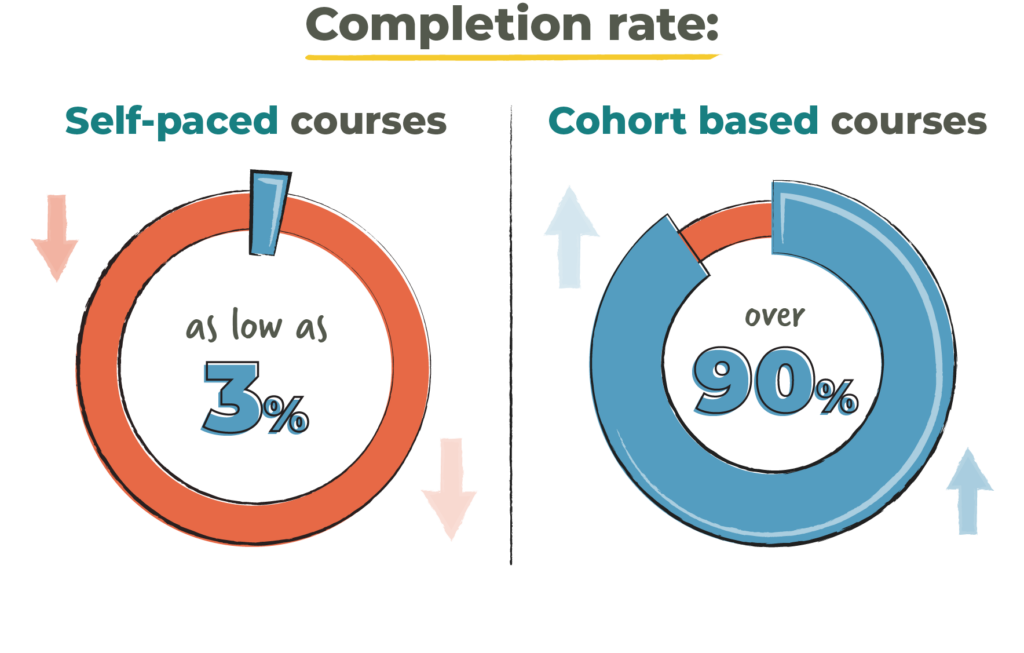

How has online learning evolved since its inception?
The modern era of online education began back in 2008 with the introduction of Massive Open Online Courses (let’s call them MOOCs).
They were pioneered by elite institutions like Harvard, Stanford and MIT and they brought classes that were previously taught offline into an online setting. In the beginning, MOOCs had a lot of fanfare and press coverage. 2012 was TIME Magazine’s ‘Year of the MOOC’ because this new style of learning was attempting to reach students who wouldn’t otherwise have access to university-led education – and much of what was available was heavily subsidised and free to use.
In 2010, online learning marketplaces began to take over. For-profit companies like Udemy and Skillshare saw an opportunity to monetise online courses. For the first time, an independent instructor could create a virtual programme and sell their services around the world. In 2016, LinkedIn joined in by launching their very own skill development platform, LinkedIn Learning.
For a while, this model seemed to be working. Courses were broken up into flexible chunks, meaning professionals could fit upskilling into their busy schedules. But they were learning in a vacuum – there was no instructor feedback and no group discussion. And, to be totally frank, it was a terribly lonely experience.


Community and the future of online learning
Over the past few years, a new model of online education has emerged from the growing desire for structure and community in the learning space: the cohort. The idea is simple, and it’s heavily derived from the traditional classroom style.
In cohort-based learning, students take a course together. They have the same schedule and meet the same deadlines – and this synchronisation results in a profound sense of connection and motivation.
But what’s more is that there’s an element of life learning. You’re not just regurgitating a lesson; you’re diving deep into a topic with a diverse group of people who all contribute aspects of their personal perspectives.
Research proves that feeling like you belong to a community of learners significantly impacts the learning experience. In cohort-based learning, relationships sit at the core of the learning process and they drive your desire to do more and learn more. Plus, you get to engage with the instructor directly, meaning you can ask richer questions and interrogate the content even further.
According to a recent study, the amount of interaction you have with an instructor directly affects learning retention. By using online tools like Zoom and Slack to receive feedback, students are far more likely to complete a course because they can track their progression in real time.
The benefits of collaboration and community in learning
We’re not saying that the MOOC-style of learning is totally dead, because it’s far from it. Cohort-based courses tend to be more of a commitment – often spanning over several weeks or months – and a lot of portfolio professionals don’t have the time to spare.
But we all have distinct learning styles and preferences. If you know that you’ll struggle with the discipline and time management of self-paced learning, then it’s worth having a look at the wider benefits of learning alongside a community of professionals.
1. You’ll foster an exchange of diverse perspectives
There’s a strong positive correlation between a learner’s sense of community and their ultimate learning success, and that’s because a collaborative learning environment empowers participants to share and makes them feel valued when their voice is heard.
Students can express their unique viewpoints, draw from personal experiences and engage in healthy debate, ultimately resulting in a well-rounded understanding of the subject matter.


When a group of learners explore the same course materials, practice applying the same concepts and collaborate to solve real-life problems, a sense of community naturally develops.
You’re not just learning from the teacher. You’re learning from each other. And that’s a powerful thing.
2. There’s increased accountability
When you learn on your own, the only one holding you accountable is you. Yes, a self-paced course may be more flexible, but the lack of deadlines and feedback can make finishing that course feel like a real challenge.
Studies found that being able to collaborate on peer learning activities has a direct positive effect on student engagement and the overall course outcome. That’s because a learner’s relationship with their coursemates encourages them to succeed.
Plus, having set deadlines and virtual classroom sessions means you’re more likely to engage with the course material, and, thus, more likely to finish the course.
3. You’re encouraged to look beyond the classroom and incorporate real-world problem-solving
Virtual cohort-based courses are far more interactive than traditional lecture-style courses because they have an applied learning philosophy. Whether you’re putting together a case study, having a group discussion or submitting an assignment, you’re encouraged to think about things in a real-world context.


And that, in turn, results in a deeper understanding of the content. According to a study published in the Proceedings of the National Academy of Sciences, students learn more when employing active learning strategies. By applying your personal knowledge and skills to practical situations, you enhance your ability to develop critical-thinking and problem-solving skills.
4. Remote learning means global connectivity
Of course, one of the biggest factors in all of this is the ability to learn from wherever.
Yes, having a set schedule of online sessions and deadlines is slightly less flexible than a totally self-directed course, but you can dial in from anywhere for live group sessions – and that means you get the opportunity to engage with learners across the globe.
By taking the classroom structure and making it virtual, we’ve opened up a whole new world of connectivity and community-building. And that’s really amazing, when you think about it. You can learn with an international cohort, which strengthens your overall network and means potential work opportunities with a global clientbase further down the line.
So how can you take advantage of the cohort learning revolution?
That’s easy. There are loads of community-based learning platforms out there (ourselves included). And they don’t all cost an arm and a leg to be a part of. In fact, you just have to be a Pioneer Member of TPC to access most of our masterclasses and courses.
Or if you’re looking for something more specific, like becoming an accredited mentor, you can check out our intensive 10-week Mentorship Programme.
A few of our favourite cohort-based learning platforms include:
Workshops and masterclasses for those who want to shift into more meaningful work
Virtual bootcamps to jumpstart a career in tech
A community-driven platform of cohort-based courses started by the founders of Udemy, altMBA and Socratic
A 4-week course for organising your digital life and unlocking creative potential
A 6-week online programme for women in leadership
Want to learn more about how community can drive your personal and professional development even further? Come along to our weekly Get Started event – we’d love to chat with you about ways you can take your skills even further.
Think this sounds like the right path for you? Come along to our monthly Get started event for new members to find out what a portfolio career could look like and how The Portfolio Collective can help you take those first steps towards professional success – and don’t forget to connect with our community!

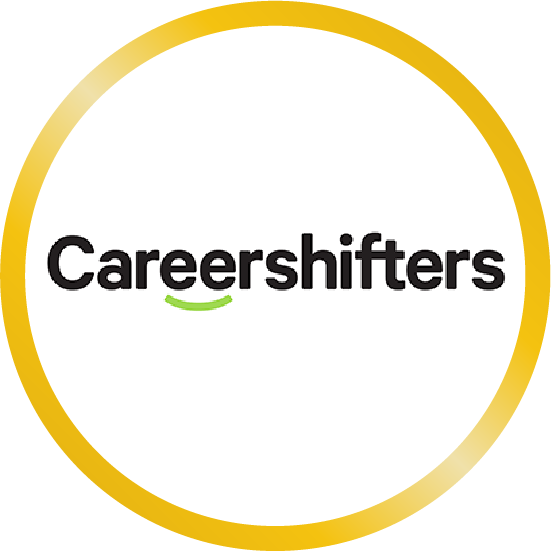
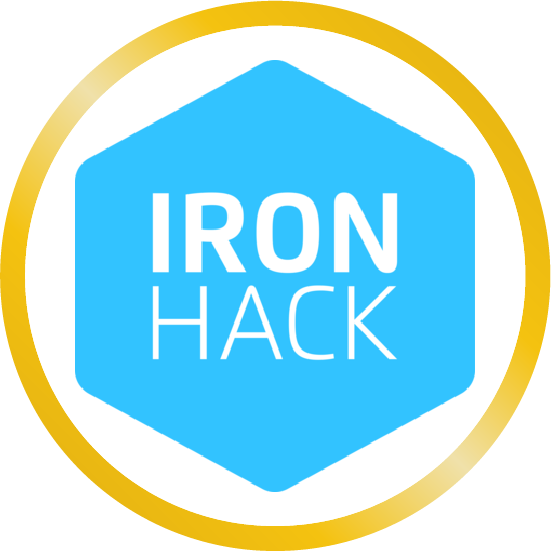

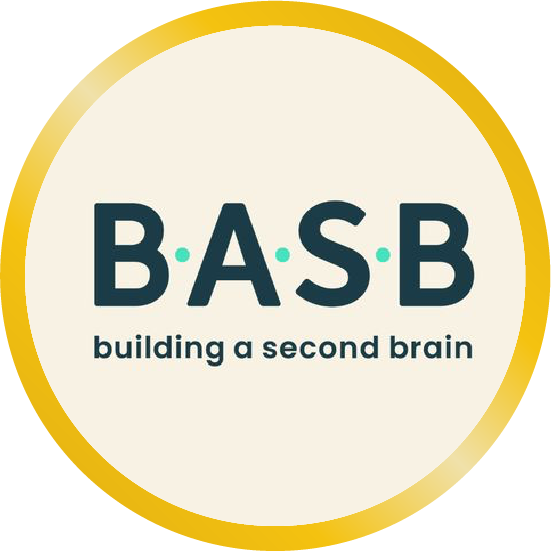
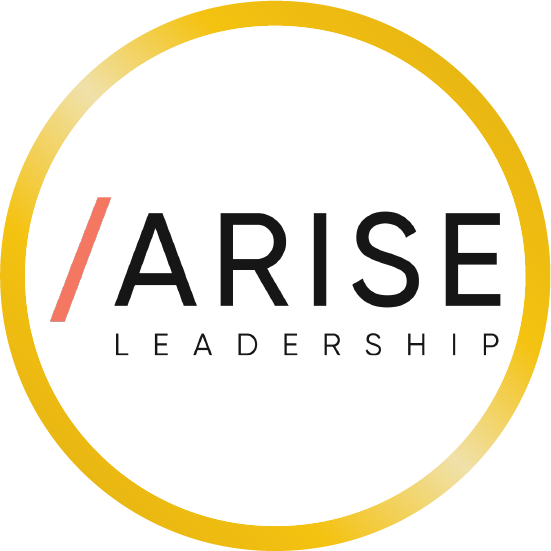



One response to “Welcome to the era of cohort-based learning”
Really interesting stats in this article around learning and courses! If anyone wants to learn more, our Fireside event on this very subject will be on 22 Sept. More details here: https://portfolio-collective.com/events/fireside-chat-learning-doesnt-have-to-be-lonely/